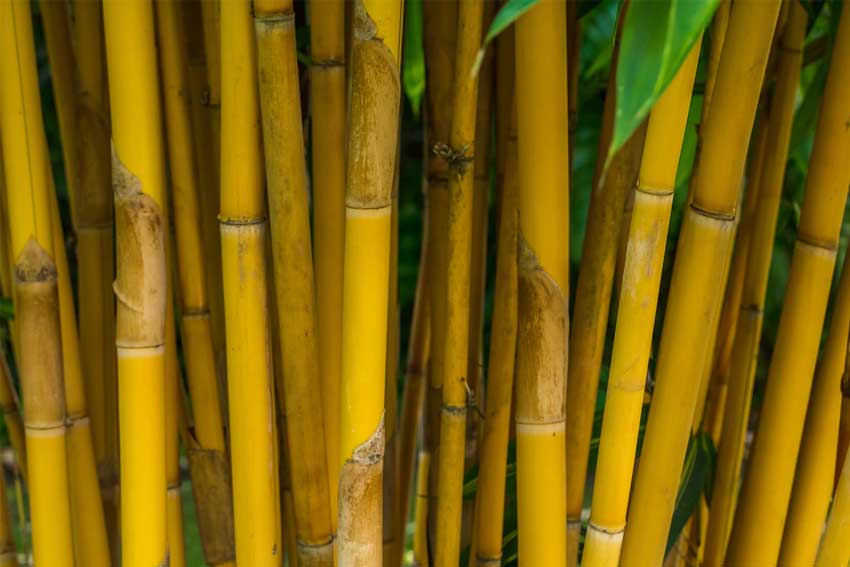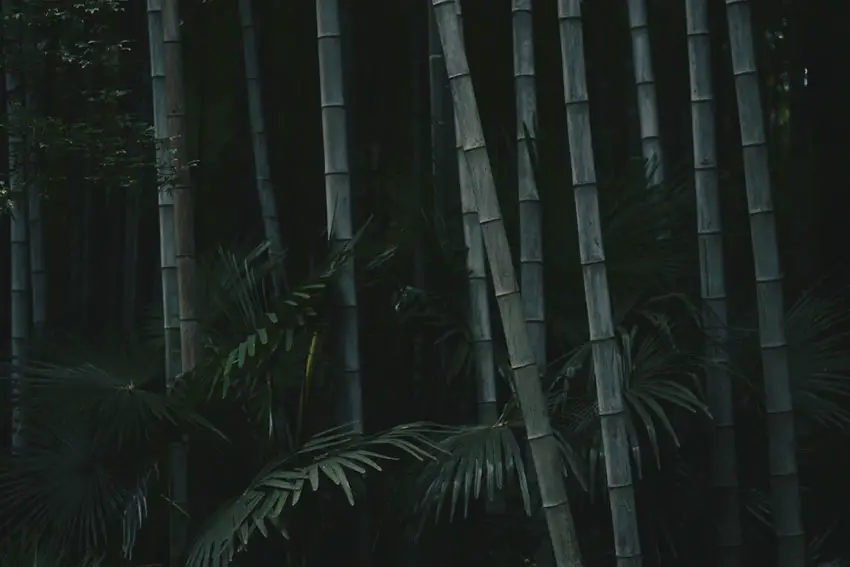Naturally, bamboo is a fast-growing tree that can go up to 70 feet. Thicker bamboos are more appealing and useful than thinner ones, plus it has more price value.
So, how to make bamboo grow thicker and faster with lots of branches? To ensure your bamboo plant is growing thicker, you first must ensure that they’re gaining all the required nutrients and water.
Most of the time, bamboo plants die due to dehydration, so it’s important to ensure the optimum water level. Along with that if you want to make your bamboo even more, thicker, place them in a sunnier place and make sure to fertilize them regularly.
In this article, we’ll talk about the ways you can implement to grow bamboo thicker in the quickest possible time.
Effective Ways to Make Bamboo Grow Thicker and Faster

Why Are My Bamboo Plants So Thin?
Before we hop on various ways to make bamboo thicker, it’s important to determine the causes why are your bamboo trees thinner. Some of the main reasons are-
- Improper watering: Under or overwatering the bamboo trees are a prime cause that hinders bamboo growth.
- Lack of nutrients: Lack of nitrogen, potassium, or silica might be another reason behind the improper growth of bamboo plants.
- Inadequate light: Light is essential for the photosynthesis process. Due to lack of light bamboo trees might be thinner than expected.
- Lack of care: Without proper caring bamboo plants may be thinner. For example, unhealthy or damaged branches might hinder growth.
- Pests invasions: Sometimes pests attack might be a possible reason for being the bamboos thinner.
- Bamboo variants: Depending upon bamboo variants their thickness may vary. For instance, Dendrocalamus Gigantes is the thickest bamboo variant that is also commonly named giant bamboo.
Now, let’s talk about the ways that can make your bamboo grow thicker.
How to Make Bamboo Grow Thicker and Faster with More Branches?
In fact, there are different ways to make bamboo trees wider. Some of the best ways to make your bamboo trees thicker and faster with more branches are given below.
1. Proper Watering
Bamboo plants like to have a moderate amount of moisture in the air around it, but overwatering is probably the most typical problem that can hinder their growth level.
Nevertheless, the soil in which bamboo is grown must be well-drained since the plant cannot thrive in waterlogged conditions. On top of that, root rot and a number of other undesirable indications might appear on the leaves if the plant receives an excessive amount of water.
So to check the moist level, try probing around with your finger in the mud to get a feel for how dry or humid it is.
After that, reduce the frequency of your watering to once per week. Alternately, you may refrain from watering the plant until you see the leaves beginning to curl like your curry leaf.
Proper watering may help the bamboos to grow faster and thicker. So, don’t ignore this anyway.
2. Fertilizing
One down point of bamboo plants is that they can eat any fertilizer (even citrus types) indicates as they are greedy eaters. Because of this, they also have the highest growth rate of all plants. As a member of the grass family, bamboo thrives when provided with a rich diet high in silica, nitrogen, and potassium.
In general, salty conditions are not conducive to bamboo’s growth, except for Seabreeze Bamboo, which is more suitable for coastal settings since it can survive greater amounts of salt. It is not necessary to fertilize your bamboo with organic fertilizer, but doing so may encourage quicker and more robust growth in your bamboo.
The only necessary thing is a single application of the organic, eco-friendly, slow-release, high-nitrogen fertilizer sold by Bamboo Special every year. A mid-spring application of organic fertilizer will give your bamboo plants a nutritional boost in time for the beginning of the shooting season in May.
3. Mulching
Since bamboo is a woody grass whose rhizomes regulate the growth of new shoots, the plant needs mulching to thrive. The leaves of bamboo plants naturally decompose and may be used as mulch if they accumulate around the plant’s roots.
Mulch materials as diverse as sawdust, chopped wood, compost, manure, leaf mulch, and bark may be used on bamboo plants. They provide both insulation and sustenance for the rhizomes.
During times of drought, excessive heat, and cold, the use of mulch may assist keep plants from experiencing moisture loss as well as temperature fluctuations that may occur. When growing bamboo in pots, a little covering of mulch is usually adequate. Mulch should be placed around in-ground bamboo at a depth of between 2 and 6 inches.
When the ground is very damp, it might be easy to overlook the fact that the mulch on top is drying off. Mulch should be raked occasionally to remove debris and discourage rats from using it as nesting material.
4. Pruning
Sometimes, all that’s needed to revive your plant (like a dying cordyline) is a trim. Cut down some of the older canes in your bamboo stand using a handsaw if you’ve observed that it’s not as impressive as it once was.
Bunches of bamboo may be pruned in two different methods, each of which encourages new growth. Annual removal of diseased and otherwise unusable culms is the first order of business. More of the plant’s resources may then be allocated to developing new shoots.
Second, there are many different kinds of bamboo, and all of them need yearly trimming in order to look their best throughout the year. In addition to encouraging the growth of new leaves, this also helps the plant focus its resources on expanding its root system.
This not only improves the plant’s aesthetic value but also helps the bamboo direct its resources toward the parts of the plant that are in good condition, so stimulating the growth of new buds like roses.
5. Placing The Plant On a Sunnier Place
For plants to develop, a source of light from the sun is necessary for a process called photosynthesis. Increased solar radiation acts as “food” for bamboo, causing it to grow more quickly. A small number of bamboo species are better off in diffused light, but in general, bamboo plants thrive when exposed to the full sun.
Most kinds of bamboo need at least four hours of daily sunlight, even if filtered, in order to grow. Moreover, remember that extended exposure to bright sunlight might cause the leaves’ color to fade.
The leaves are naturally lightened by the sun’s rays. Plants of the same species that spend their days in full sunshine may seem different from those of the same species that spend their days in filtered sunlight.
How Much Time Does It Take for Bamboo to Grow to Its Full Thickness?

When it comes to how long it takes for bamboo to thicken up, a number of variables come into play. To begin, the time it takes for various species of bamboo to reach maturity varies greatly.
A thick-walled bamboo plant will take longer to mature than a thin-walled bamboo plant because it produces more biomass from its leaves. On the contrary, thin-walled bamboo cultivars use these leaf materials in the production of food, hence accelerating their development.
The kind of bamboo used also has an effect on its final density. Some types of bamboo, for instance, are more adept at holding water, allowing them to thrive in humid conditions.
Some plant species may thrive in cold, dry climates. When bamboo is grown in a cool environment, it thickens up, gains biomass, and develops more robust roots. To some extent, the age of the plant when it is planted affects how long it takes for the bamboo to mature.
How to Care for Your Bamboo Plant?
Once bamboo plants are established, maintaining them is a breeze. Bamboo thrives with weekly waterings of at least 1 inch (2.5 cm), whether from natural precipitation or human intervention.
The best way to prevent dehydration damage to your bamboo is to water it often and thoroughly so that it develops strong, deep roots. Do not scrape up bamboo leaves from the roots if at all feasible.
The leaves will shield and water the roots. As they break down, they’ll provide nutrients to the soil that bamboo thrives on.
Nevertheless, applying mulch to the bamboo’s root system will also promote healthy growth. Compost or a balanced fertilizer should be applied to bamboo plants in the spring for optimal growth.
Frequently Asked Questions
What is the ideal time to plant bamboo?
Out of the many advantages of bamboo plants, one of the great things is that bamboo may be planted year-round, except in the winter if the ground is frozen or if your garden is very chilly or exposed. If that’s the case, wait until spring to plant them.
Because new plants are created from rhizomes, which store energy and stay inactive from autumn to spring, a consistent supply of new bamboo canes can be expected each summer. The roots have time to get established after an autumn planting before the plant enters its dormant season.
How to make lucky bamboo grow faster?
You can grow lucky bamboo faster by proper watering, applying the right nutrients and potting mix in soil, pruning the plants, maintaining the proper temperature between 65 to 90 degrees Fahrenheit, ensuring adequate lighting, etc.
What is the optimal pH for bamboo trees?
Bamboo plants likely grow in lightly acidic soil at a range between 5 to 6.5. If the soil is too acidic, apply lime to increase the pH value.
Conclusion
So far you got to know how to make bamboo grow thicker and faster with more branches. At first, monitor the growth and thickness of the plants and then take the necessary actions according to this like watering properly, placing trees in adequate sunlight, applying mulch and nutrients, pruning, care, and so on.
Furthermore, to get thicker bamboo, you can plant two new bunches of bamboo each year, or do area transplanting with your current bamboo plants. Thus it’ll help to improve the growth rates that will help in deeper root systems.
A very helpful video on growing bamboo faster in an effective way:

I’m Shofi, a passionate gardener and blogger. I have 10+ years of experience in gardening and hold certifications in horticulture and garden design. I share my knowledge and skills through my garden blog to inspire and educate others on the joys of gardening. I try to provide valuable information and create a community for gardeners of all levels to connect and learn. My ultimate goal is to inspire others to start their own gardens and connect with nature.
